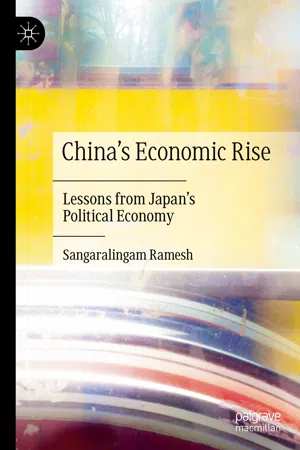Chinese Chronicles
The earliest known writings inclusive of Japan, the Chinese chronicles before 700 AD, refer to Japan as ‘Wa’ which was composed of one hundred conflicting states.1 The earliest of such records, which can be dated to 57 AD, notarised the names of chieftains and other polities in the archipelago.2 The Chinese chronicles also mention the tributary missions between the chieftains of Japan and the Chinese Han and Wei courts.3 Reference was also made to Han colonies in Korea.4 These included Lelang and Daifang.5 The reference made by the Chinese Chronicles to the conflicting states in Japan could have been due to a population explosion which necessitated the need for more land for intensive agriculture following the emergence of the Yoyoi culture on the island of Kyushu. Archaeological evidence from around this time does suggest an increase in defensive settlements; and skeletons with evidence of damage due to the impact with projectiles.6 Nevertheless, which of the Wa states was the most powerful is indeterminate. This is because one Chinese chronicle written between 280 AD and 297 AD refers to it as ‘Yamaichi’, while another Chinese chronicle written 150 years later refers to it as ‘Yamadai’.7 It is difficult to determine if they were the same states, different or whether they existed at all. An alternative theory which has been put forward is that an entirely different entity existed, the state of Kyushu, one of whose princes invaded the Kinai-Yamato area becoming the first Emperor of Japan, Jimmu.8 The early Chinese writings are the only literary evidence of early Japanese history, because either no Korean or Japanese literary evidence exists or survived prior to the early eighth century AD. The first Japanese literary evidence of Japanese history did not arrive until 712 BC, with the emergence of the first tangible Emperor from whom the current Emperor can claim to be a direct descendant. In this case, it is evident that literary influences developed much earlier in China than they did in either Korea or Japan. The early Chinese literary sources suggest that there was a significant diffusion of cultural influences from both Korea and China, with Korea as a conduit, to the peoples of the islands of Japan.9 However, Chinese influence was more significant over the Japanese archipelago; and the legitimacy of the titles of Japanese chieftains was somewhat dependent on recognition by the imperial Chinese court.10 But the legitimacy of Japanese polity ended in 631 AD when the Tang Emperor absolved the Japanese from having to pay annual tribute to the Tang Court.11
Palaeolithic, Jomon and Yayoi Periods
Until 13,000 years ago the Japanese islands were part of continental Asia, but as the ice age ended and glaciers melted, sea levels rose, flooding the land bridges across which ancient animals, including Homo Erectus and Homo Sapiens , had crossed over from Asia to Japan half a million years previously.12 The earliest Palaeolithic stone tools found in the Japanese islands were at a site called Takamori in Miyagi Prefecture, dated to be as 500,000 years old.13 The stone tools found at Takamori are of a similar age to the stone tools found at the Zhoukoudian in China.14 At the latter site, a remarkable number of Homo Erectus fossils were also found. The presence of land bridges which connected the islands of Japan to the Asian mainland may have facilitated the movement of Homo Erectus populations from China to Japan during the mid to the late Pleistocene period.15 The latter period ranges from 125,000 years to 10,000 years ago.16 Dynamic changes in human evolution were taking place during that time.17 Homo Sapiens, having evolved in Africa, were moving out of Africa to colonise other continents.18 Where the Japanese islands were once connected to mainland Asia, this facilitated the movement of hominid species like Homo Erectus and Homo Sapiens to Japan. The land bridges to the Japanese islands from continental Asia are best associated as starting from either the Korean peninsula, Siberia and/or Sakhalin.19 Nevertheless, no archaeological evidence has been found which can shed led light on the physique of the early Homo Erectus population of Japan or to provide sufficient grounds to infer that these early populations were the root of future Japanese populations.20 However, the skeletal remains found on the island of Okinawa, the so-called Minatogawa remains, do provide an insight into the physique of the first Palaeolithic inhabitants of Japan 17,000 years ago.21 Analysis of the cranium of the Minatogawa population indicates similarities with populations in southern China, 30,000 BC, and to north China, 10,000 BC.22 However, the mainland Japanese population during the Holocene period were different in form and structure from the Minatogawa people.23 The Holocene period covers the time period from the present to 11,000 years ago.24 Nevertheless, stone tools have been found in the south of Kanto which may be older than 30,000 y...
